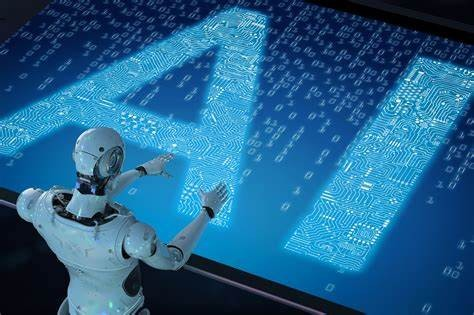The AI Revolution: Transforming Our World

The Origins of AI
The seeds of modern AI were sown in antiquity, where myths, stories, and rumors spoke of artificial beings endowed with intelligence or consciousness by master craftsmen. Greek mythology featured Talos, a giant constructed of bronze who guarded the island of Crete, hurling boulders at invading ships and completing daily circuits around the island.
However, the true leap forward occurred in the 1940s with the invention of the programmable digital computer—a machine based on the abstract essence of mathematical reasoning. Philosophers had already attempted to describe human thinking as the mechanical manipulation of symbols, laying the groundwork for AI.This pivotal moment inspired scientists to seriously discuss the possibility of building an electronic brain.
The Birth of AI Research
In 1956, a workshop held at Dartmouth College in the U.S. marked the birth of AI research. Visionaries like John McCarthy, Marvin Minsky, Nathaniel Rochester, and Claude Shannon attended, becoming the field’s founding fathers. They predicted that within a generation, a machine as intelligent as a human would exist. Millions of dollars were allocated to make this vision a reality.However, the road ahead proved far more challenging than anticipated.
The AI Roller Coaster: Optimism, Disappointment, and Resilience
The subsequent decades witnessed cycles of optimism followed by periods of disappointment and funding cuts—an ebb and flow known as the “AI winter.” In 1974, criticism and pressure led the U.S. and British Governments to halt undirected AI research. Yet, resilience prevailed. Japan’s visionary initiative injected new life into AI funding, only to face disillusionment in the late 1980s.Finally, in the 2020s, machine learning, powerful hardware, and vast data sets reignited interest and investment in AI.
AI Today: From Mazes to Language Generation
Fast-forward to today, where computers and AI have evolved exponentially. We’ve moved from simple mazes to complex language generation. AI milestones dot our timeline, performance improvements astound us, and applications span diverse domains.The world has changed, and AI continues to shape our collective destiny. Artificial Intelligence (AI) has emerged as a seismic force, reshaping industries, economies, and the fabric of our daily lives. From self-driving cars navigating city streets to personalized healthcare diagnoses, AI’s impact is profound and multifaceted. In this comprehensive essay, we explore the revolution of AI, its implications, challenges, and boundless potential.
The Power Shift: From Broadcasting to Doing
Unlike previous technological waves, AI doesn’t merely enhance existing capabilities; it creates entirely new ones. Here’s why this shift is unprecedented:
-
Accessibility: AI democratizes power. What was once the domain of capital-rich elites or national governments is now accessible to individuals, startups, and researchers worldwide. The cost of AI development has plummeted, enabling innovation at an unprecedented scale.
-
Doing, Not Broadcasting: AI isn’t confined to broadcasting information; it’s about action. AIs perform tasks inconceivable a few years ago—managing schedules, optimizing supply chains, and even discovering novel drug compounds. The pace of change is breathtaking.
Economic Impact: A $16 Trillion Opportunity
The economic implications of AI are staggering. PwC estimates that by 2030, AI could contribute a whopping $16 trillion to the global economy. Here’s how:
-
Productivity Boost: AI automates repetitive tasks, freeing up human labor for more creative and strategic endeavors. This surge in productivity translates directly into economic growth.
-
New Business Models: AI enables innovative business models. Personalized recommendations in e-commerce, predictive maintenance in manufacturing, and dynamic pricing algorithms redefine industries.
-
Healthcare Revolution: AI isn’t just about efficiency; it’s about saving lives. From disease diagnosis to drug discovery, AI transforms healthcare outcomes.
Challenges Ahead: Navigating the AI Landscape
However, the AI Revolution isn’t without challenges:
-
Job Displacement: As AI disrupts employment patterns, we must address reskilling and social safety nets. New jobs will emerge, but some roles will become obsolete.
-
Ethical Dilemmas: AI systems make decisions that impact lives. Ensuring fairness, transparency, and accountability is critical. Bias in AI algorithms remains a pressing concern.
-
Existential Risks: While sentient AI remains distant, we must consider long-term risks. Aligning AI with human values is paramount.
The Human-AI Partnership: Collaboration, Not Competition
Rather than fearing AI, we should embrace it as a powerful ally. The future lies in collaboration—a symbiotic relationship where AI augments human capabilities:
-
Education and Adaptation: Our education systems must prepare individuals for an AI-driven world. Lifelong learning and adaptability are essential.
-
Ethical AI Development: Researchers, policymakers, and industry leaders must collaborate to create ethical guidelines. Transparency, privacy, and safety should guide AI deployment.
-
Human-Centric Design: AI systems should enhance human well-being. Whether in healthcare, education, or transportation, the focus should be on improving lives.
Conclusion: Shaping Our Collective Destiny
The AI Revolution transcends algorithms and neural networks. It’s about shaping our collective destiny—a journey where humanity and AI coexist, innovate, and thrive. As we navigate this transformative era, let wisdom, empathy, and a commitment to the greater good guide our path



0 Comments
No comments yet, be the first to comment